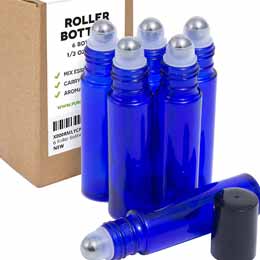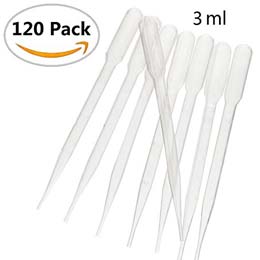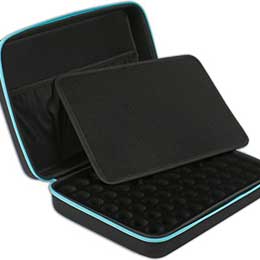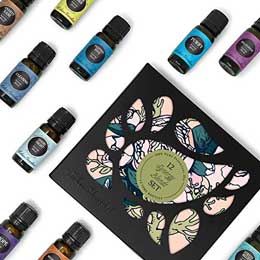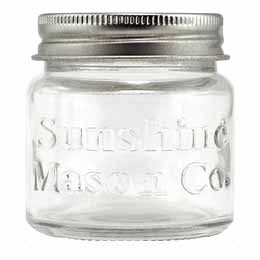Natural Approach to Relieving Hot Flashes
If any of you reading this is going through or has gone through menopause then you are fully aware of hot flashes and how they make you feel.
That sudden feeling of warmth, or in some cases extreme heat, sweats or profuse sweating, flushed or red face, and when it subsides, it leaves you chilled. Ah, the hot flash, the most common symptom of menopause.
Sometimes I stick my head in the freezer, other times I'd love to bury myself in a tub of ice but that isn’t all that practical.
Although there are some lucky girls out there that don’t feel as described above and only experience the mildest of hot flashes and maybe none at all – I wish I were you.
I’ve been dealing with this for longer than I can count on both hands and they really don’t know why some women get hot flashes and some don’t?
What Causes Hot Flashes?
There are several factors that can bring on hot flashes during menopause.
- Little exercise
- Smoking
- Obesity
- Caffeine
- Alcohol
- Spicy foods
- The heat
- Stress
- Tight clothing
Well, no wonder I can’t seem to rid myself of hot flashes. Not really, I’m pretty healthy and only a couple from the list applies to me, I mean I’m stressed out by the sheer longevity of this little hormonal imbalance, watch out because there are times I feel a little crazy and show some teeth - time for therapy.
Can you Prevent Hot Flashes?
Well, if you’re gonna get them, you’re gonna get them but you can try and avoid triggers.
- You can also stay cool by wearing light layers of clothing made of natural fibers. Layers that are easy to shed if need be and put back on when necessary.
- Drink plenty of water throughout the day.
- If you have a ceiling fan in the bedroom try turning this on at night before you go to bed (or a standing fan). I know it’s a little chilly to start but you really don’t know there on once you’re sleeping and when you wake up with a hot flash, oh boy do they help.
- Get some good exercise on a daily basis. Take a walk in the morning before work or after dinner, go on a bike ride, turn on some good dance music and have fun and be silly dancing in the privacy of your home (I do this). A yoga class might be good to help reduce your stress levels.
- There are natural over the counter herbs and other products that can help you manage hot flashes like black cohosh, evening primrose oil, Vitamin E, dong quai, etc. Talk to your doctor and see what you might try.
These are just some of the things you can try to help you out. Honestly, I’ve think I’ve tried all of these suggestions and more, they do work but hot flashes have a mind of their own, they come and go as they please.
Using Essential Oils to Help with Hot Flashes
So I was taking a look at all the essential oils that are said to help with hot flashes and searched the internet for a natural recipe using these oils and I did find a few, below is the one I made.
I have to say that I believe this is working for me.
Body Oil Recipe for Hot Flashes
Below are the ingredients I used for my hot flash oil. I added the ingredients in a 1/ 3 ounce glass roll-on bottle.
Fill the bottle a little more than half way with fractionated coconut oil, vegetable oil or your favorite carrier oil (almost 2 teaspoons). I happened to use my rose geranium infused oil that I make, you can find the recipe HERE. Note, this will open in a new tab.
Now add your drops of essential oils. I know it can be hard to get the exact amount of drops out that you want but I find if I hold the bottle slightly at an angle, you can get a slow drip.
- 2 drops Geranium essential oil
- 2 drops Lemon essential oil
- 2 drops Clary Sage essential oil
- 2 drops Peppermint essential oil
- 1 drop Jasmine oil (optional but I like the light scent it adds)
If you have a little room left in the roller tube, go ahead and fill the remaining space with your carrier oil.
Place the roller ball on and shake to combine. This recipe is a good starting point. Personally, I use a little more of each oil but these amounts and a little more don’t bother me.
No need to use a diffuser while I’m around. No seriously though, it isn’t strong, it’s a nice scent, absorbs quickly and the scent doesn’t really last that long.
I only use this three or four times throughout the day. If you have sensitive skin and notice any discomfort or irritation, stop using it. Remember to test it first and if you’re new to essential oils and concerned at all, ask your doctor.
Using Your Hot Flash Oil
So I wait until I feel the hot flash coming on and then I shake the container and roll a little on to the underside of my arms or the inside of my thighs. I have also applied this to the back of my neck. And I apply it before I go to bed.
All you need to do is roll it once or twice. I watch the area I’m rolling it on to make sure something’s actually coming out; sometimes the rollers don’t roll so well.
Maybe you’re wondering why I wait until I feel a hot flash coming on? Typically when I experience a hot flash they come on fast and hot. I wait because I want to know if this recipe is really working and I gotta say, so far it seems to be nipping it in the (you know what).
When I typically have many hot flash episodes during the day, the first time I used this, I only had the beginnings of three.
Well, let us know if you’ve tried this and if it works for you. If you have something natural that works for your hot flashes, share it with us.
IMPORTANT DISCLAIMER INFORMATION: None of the essential oil topics presented to you on Earth to Jamie have been evaluated or approved by the FDA. The recipes and opinions presented to you should not replace personal judgment nor medical treatment when indicated, nor are they intended to diagnose, treat, cure, or prevent any disease. Always talk to your physician about the use of alternative methods or any other complimentary treatment. Reading content on this website indicates your understanding and agreement to our disclaimer statement. See Terms of Use under About Us for more information.
Performing a Patch Test and a Few Safety Tips.
If you are new or not sure how a blend or essential oil may react on your skin, it is always recommended to do a patch test prior to use. To do this, mix 2 drops essential oil to about 1/2 teaspoon carrier oil then apply to a patch of skin such as the forearm. Observe that area over the next 1 to 2 hours for any noticeable reaction; this will usually occur within 5-10 minutes. If you experience any irritation or discomfort either stop using or adjust the amount of essential oils you've used.
If you have not used a carrier oil before, you can also perform a patch test to the inner arm area.
Prior to using essential oils, always check the label for appropriate usage and do not apply essential oil to sensitive areas like the eyes, ears, and mucous membranes. If you have a medical condition and/or you are taking medications, consult your physician prior to use.
More information about essential oils can be found here
Check out the Health & Beauty section for Homemade Beauty Recipes
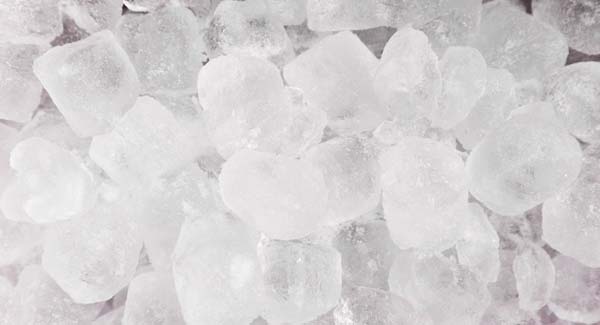



 Wellness Mama 5 Step Lifestyle Detox
Wellness Mama 5 Step Lifestyle Detox